How to use a coffee maker – drip, filter, pod and bean-to-cup machines and more
Struggling to figure out how to use a coffee maker? We show you how to work your machine or coffeeware whether you're working with ground coffee or whole beans


Want to know how to use a coffee maker? We think you'll agree there's nothing better than a freshly-brewed cup of Joe. Sure, the freeze-dried instant granules are quick and easy, but if you know how to prep your machine, you can produce a proper drink pretty pronto.
The best coffee machines do far more than just steep hot water into ground coffee particles. You can create super-strong espressos with a cool crema top, enjoy long and indulgent lattes and create the frothiest of cappuccinos to wear that milk mustache with joy as you take your first sip.
Knowing your way around your machine, you'll be able to make a professional-tasting drink that'll taste just like your favorite coffee house, for far cheaper. And, you'll be in control of the hygiene too since you'll be playing the role of barista. Yes, when you put it that way, we've slyly suggested that you'll also need to know how to clean a coffee maker too, but general maintenance of your kitchen gadget is part and parcel when investing in this appliance.
So whether you've lost the instruction manual and forgotten how to use a coffee machine, or you want to see how a particular machine will fit into your morning routine, we spill the beans on the different types of appliances and how they can fit into your lifestyle.
How to use a coffee maker whether bean to cup, a drip or filter pod
First of all, we're under the assumption that you have a coffee maker/machine, or you're intending to buy one. While there are lots of affordable models on the market, some higher-end buys can cost way into the thousands. So if you're out-priced for the option you want, or are saving up, discover how you can make coffee without a coffee maker.
How to use a single-serve coffee maker
There's not much point in owning an all-encompassing, all-singing, all-dancing coffee maker that makes multiple cups of coffee if you live alone (unless you're a serious coffeeholic/cafephile/coffee-aficionado?).
So if you are an independent woman (or man) who needs a solo piccolo, the good news is that these coffee makers are easy to use. While many of these models rely on pods or capsules for a perfectly-portioned individual drink, some rely on ground coffee to do the job. While they range in size, most can fit comfortably on a small kitchen countertop or snug coffee nook.
Get small space home decor ideas, celeb inspiration, DIY tips and more, straight to your inbox!
Note that when we're talking about pods and capsules, these can vary in shape and size. Some are soft and flat (more like coffee bags), while others take on a hard, domed or miniature shot glass-like appearance.
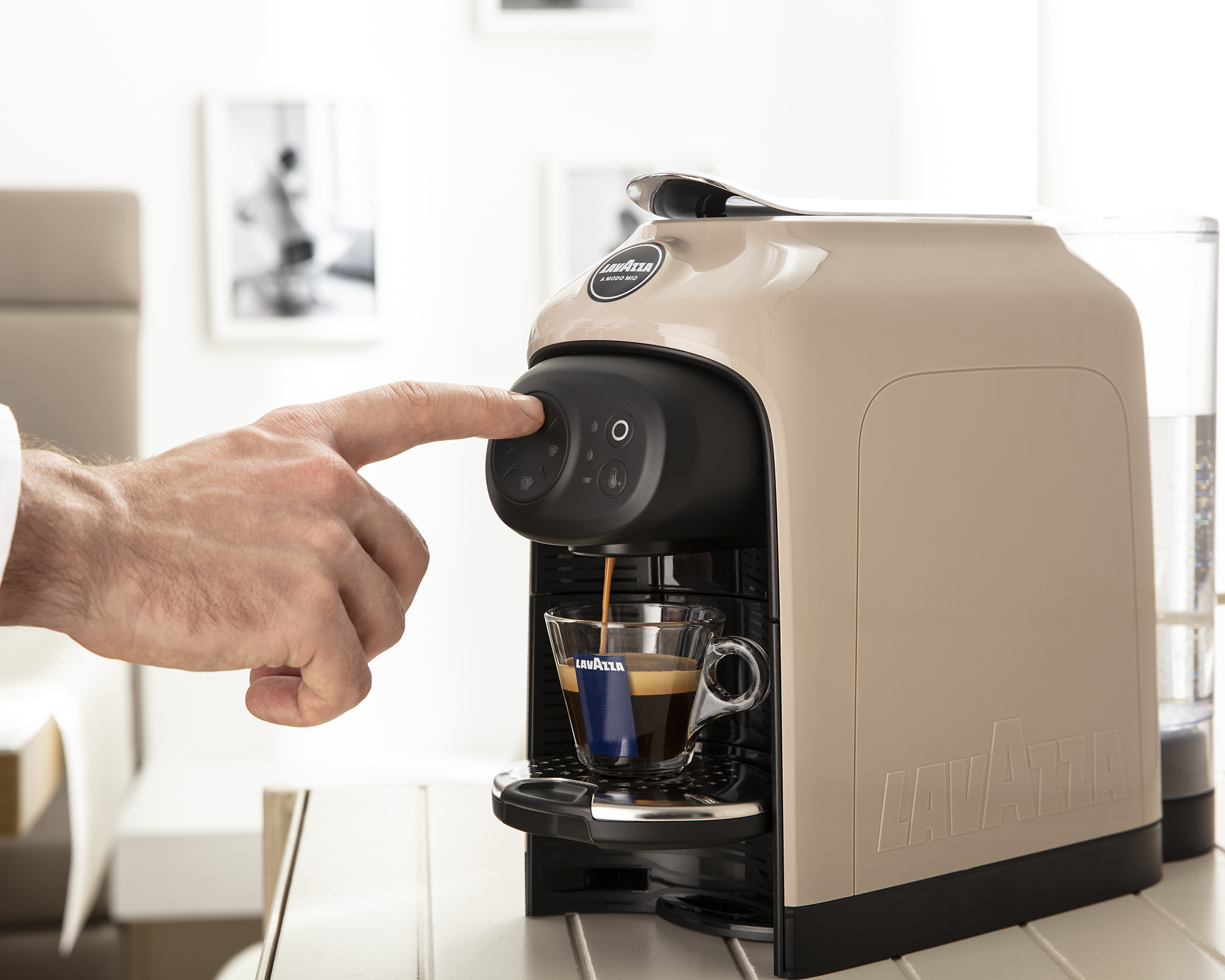
How to use a pod coffee maker
- Fill the water tank with fresh water using the min and max levels to determine the appropriate amount of water.
- Turn the machine on
- Place your cup underneath the nose and spout of the coffee maker, ensuring that it is positioned centrally.
- Load a pod of your choice into the capsule hole / cavity - you may need to make sure it's correctly inserted by working a lever.
- Press the button on the machine (there may be more than one button to determine the coffee strength or cup size, so select the button based on your drink preference).
- Once the pour is complete, remove your hot cup from the cup tray with care.
- Remove your empty pod from the used capsule drawer.
- Carefully pull out the drip tray and pour the contents into your kitchen sink, making sure to swill with water so it doesn't stain the basin.
- Replace your drip tray and turn the machine off from the mains.
If you prefer chilled coffee, check out our Keurig K-Supreme Plus Single Serve Coffee Maker review. Like the best cold brew coffee makers, this machine makes iced coffee drinks which are perfect for the summer months, and can make up to nine drinks before you need to refill the water tanks. Perfect for picnics in the park or alfresco drinks in your backyard.
It's good to note that if you like a little ice ice baby, then some machines like the Ninja Specialty Coffee Maker have an 'over ice' function where the coffee brews slower than the hot, and will start and stop for a short period to ensure all the coffee grounds are evenly saturated.
Why should you use a pod coffee maker?
'Coffee pod machines are inherently designed for convenience,' says Dave Cutler-Colclough, coffee specialist, brand ambassador and head of training at Lavazza.
'The main function of a pod coffee machine is to create barista-style coffee at home by pushing a button, which makes the majority of coffee pod machines easy to use.
'The main reason consumers use pod coffee machines is due to the fact there is little to no mess involved in making coffee at home, in comparison to other methods of coffee making, including bean-to-cup machines and cafetieres,' .
'The second is that the upfront costs of pod coffee machines are also lower than other coffee machines, including bean-to-cup machines.'
Cutler-Colclough's pod coffee maker tips
- Always remember to eject the coffee capsule after you have made your coffee. This will prevent the used capsule from getting stuck in the coffee machine and ensure you avoid any breakages
- Before you make your cup of coffee, turn the pod machine on and run a cycle to flush warm water through the machine into your cup, and then throw away the water. This will clean the machine, removing any old coffee residue, and the warm water from the machine will pre-heat your coffee cup.
Using a Nespresso coffee maker
Arguably one of the most recognizable brands on the market, the best Nespresso machines are easy to use and have settings to suit the most discerning of coffee drinkers.
'Nespresso Vertuo machines are simple and convenient to use,' assures Brian Mulay, machine specialist, Nespresso.
'At the touch of a button, you can brew exceptional coffee at home. Vertuo’s precision technology reads each capsule and automatically adjusts to its ideal setting, so you can get the perfect pour every time. With Original, you can ensure peak flavor for your perfect cup of coffee using industrial-quality levels of pressure.'
'Hermetically sealed in iconic Nespresso capsules, our blends preserve their taste and aroma, delivering a unique sensorial experience, cup after cup. Not only are our machines easy to use, the capsules are made from aluminum which is the best material for preserving the freshness and quality of our coffees and it can be recycled again and again.'
'We're is committed to make recycling as easy as possible for consumers. In the US, we partner with UPS so that consumers have several options for convenient recycling. Consumers can bring used capsules to 88,000 UPS drop-off locations or at any of our boutiques.'
'Whether you prefer dark and strong or mild and smooth, there's a coffee capsule to fit every taste and mood. Plus, there are limited edition releases and seasonal flavors. Our machines use the precise amount of coffee, water and energy needed to brew a single cup of coffee. This reduces waste and minimizes carbon footprint.'
Is a Nespresso coffee maker on your wishlist? Examine this machine in depth with our Nespresso Vertuo Next and Aeroccino 3 milk frother review.
How to use a bean-to-cup coffee maker
Arguably, the best tasting cup of coffee is made using whole beans which can be ground using a coffee maker or grinder. The result is a 'fresher-tasting', more aromatic beverage. Pods on the other hand can taste stale which isn't a surprise given that some have been sitting on the shelf for weeks, if not months!
With coffee beans, you've loads more control over the final result. Coffee too bitter/sour? Change up the coarseness of your grounds (FYI - finer grounds will produce stronger coffee, so playing about with the grinding settings can alter the taste).
You're also not constricted to weird pod names, plus it allows you to develop a relationship with an independent roaster. But, most importantly, using a coffee maker that crushes beans rather than capsules is far better for the environment too as you're not using plastic or metal containers (albeit many are now recyclable now). You'll also have better control of where your coffee is sourced and can help farmers in developing countries earn a decent living.
But, it's not just about buying the best coffee beans or taking out one of the best coffee subscriptions for convenience's sake: you also need to know how to store them correctly too.
'For the very best coffee, instant just won’t do. If you’re looking for fresh, flavorsome coffee, you should always look to buy whole coffee beans and grind them yourself. You should be careful about how finely you grind your coffee though, as you’ll get different results,' says Lara Brittain, kitchen expert at Currys.
'The flavor of coffee comes from within the cells of the coffee bean, and when it’s ground, the exposure to air creates the aroma. The longer it’s left like that, the quicker it will lose its aroma.'
'You should keep your coffee beans in an air-tight container. They have odor-absorbing properties, so if you leave them exposed in the fridge, you might find they start smelling like leftover garlic chicken.'
'There’s some debate between coffee aficionados about where to keep your coffee though. Some say you should keep them at low temperatures – so you should keep them in the fridge if you want to use them within that week, or in the freezer for any longer. Others will say they’re fine in a cool dark place, so it’s up to you really.'
Fancy a bean-to-cup machine that produces coffee on tap? If you're guzzling the good stuff all day (remote workers we hear you!), take a look at our De'Longhi Primadonna Soul Automatic Coffee Maker review. You'll never tire from using a coffee maker like this as it promises to make one of 21 beverage choices in a matter of seconds!
If you're now pondering over whether to buy a pod or bean-to-cup machine, we've put them head to head and weighed up the pros and cons of each to see which floats your (caffeinated) boat.
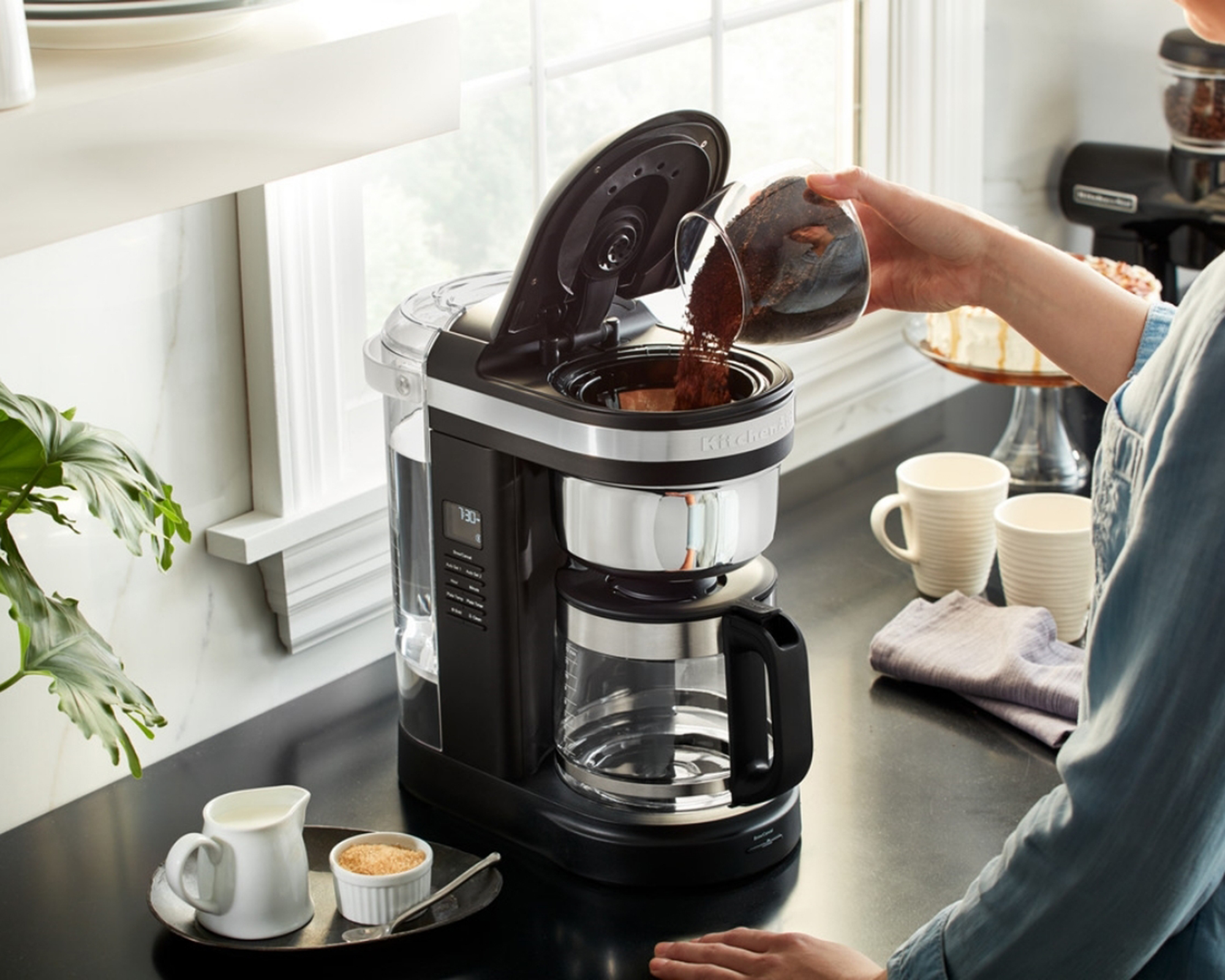
How to use a drip or filter coffee maker
A filter coffee maker filters your ground coffee through the machine to produce a strong beverage that packs a punch. Perfect for if you need to make large batches of brew at once, the pour-over technology is a sure-fire way to get serve coffee quickly and easily without having to go through an individual coffee program several times over. They also keep the jug of coffee warm, so it's perfect for when guests turn up at different times, or preparing and leaving for loved ones to help themselves.
'Call it American coffee. Call it filter coffee. By any name, brewed, filtered coffee is by far the most popular preparation method throughout the U.S. and Northern Europe, alive with aroma and rich taste. The method’s origins can be traced to early 20th-century Germany and the advent of paper filters,' says Moreno Faina, director of the university of coffee at illycaffé.
'Grind is critical. Choose medium, because coffee ground too coarsely will taste weak in the cup. If it’s ground too finely, you can expect a bitter brew. Use a thermal carafe and enjoy within a few hours of preparation, and be sure to clean your machine thoroughly (about once a day for daily users) to eliminate oil and mineral build-up that alter coffee’s taste.'
'Do not store coffee in a glass pot left on the heating element – it will make your coffee taste burnt, acidic, and bitter. Ideally, use a machine with a thermal carafe, or transfer coffee immediately from the glass pot to a thermal container.'
How to use a coffee maker with a permanent filter
You will need:
- Hot water
- Tablespoon
- Your choice of medium-grind ground coffee
- Thermal carafe
- Warm up the coffee pot for a few minutes, filling it with hot water
- Use 7-8 grams (about a tablespoon) of ground coffee for about every 100-150 ml (about 3.3-5 oz) of water. The amount of coffee can be adjusted to your taste, or to the machine manufacturer’s recommendations.
- Add water and coffee to machine
- Remove from heat and pour into thermal carafe (if you don’t brew directly into one) to keep the coffee warm and fragrant.
Using a coffee maker with paper filters
If your coffee machine doesn't have a permanent filter, you may need to use paper filters, like these unbleached paper pulp pour over cones from Amazon. It's a slightly different process, but whichever machine type you have, you'll produce a sediment-free coffee that beats the shop-bought soluble stuff.
Here, Brittain walks us through the proper way to use a coffee maker with this feature.
- Add a coffee filter to the filter basket: There are lots of different types of coffee filters to choose from, but you’ll often find them branded as either ‘natural’ or ‘bleached’. While cheaper, generic options might be cheaper in the short-term, they’re less dependable for good results.
- Measure out your coffee: How much coffee you put in the filter depends on how much coffee you want to make. It will also depend on your coffee machine and the type of coffee you’re making, too. Usually, you’ll need about two tablespoons of coffee for every six ounces of water, but you should check your coffee maker for its perfect ratio. Some specialty blend coffees can have different ratios too, but you can check the back of the package for instructions.
- Measure out your water: Your coffee pot will have markings on the side to help you measure out how much water you need. To fill it up, there’s usually an opening behind or above the filter.While it might be tempting to just pour the water through the filter basket, this could cause some problems so just fill it up where it’s meant to go.
- Plug the coffee maker in: Some machines will start brewing the coffee as soon as you turn it on, while others might need you to press a button to get them going. Some also have a ‘time setting’, so your coffee is ready when you need it.
- Wait until the coffee has finished brewing before you pour it: We know, it’s tough to watch that pot take forever to fill, but a little patience will be worth it in the end. Some machines do have a ‘pause’ option though, for those times you just need it right away.
- Throw away the paper filter: you should remove it and throw it away as soon as you’ve used it, because leaving coffee grounds in the machine will make your next pot of coffee too bitter.
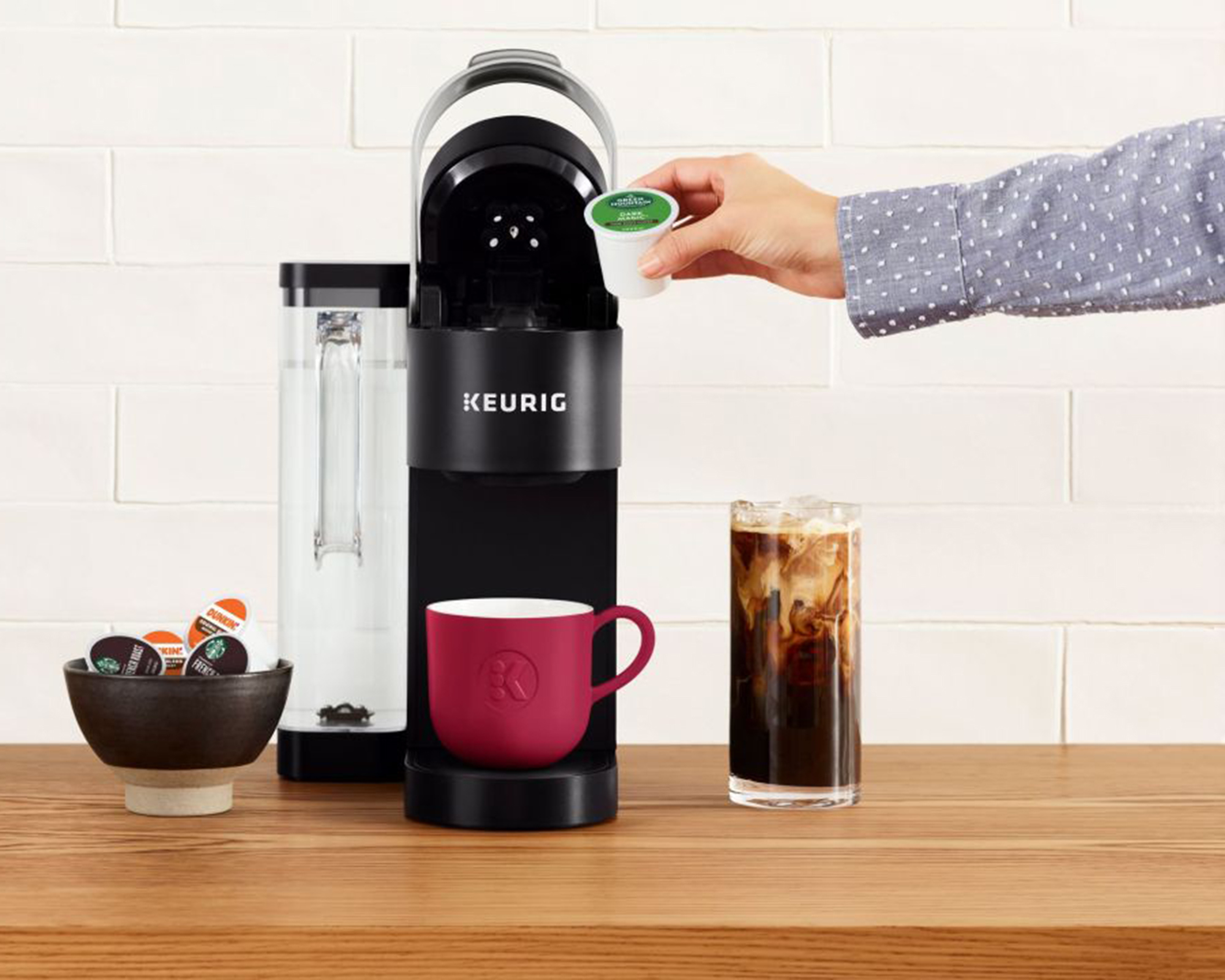
How to use a Keurig coffee maker
Though they've been around for ages, and they technically come under our single-cup coffee maker category (with the exception of the K-Duo), even the best Keurig machines need a little tinkering around with to make sure you know how to use a coffee maker from this brand.
And, with some many specifications, it can be difficult to write up a one-sized-fits-all set of instructions for all of them. Many of the range can be used by following the pod instructions we just went through above, but instead of pods/capsules, Keurig machines use plastic cartridges called 'K-Cups'.
These mini cups span everything from tea, coffee and hot chocolate drinks, and are great for if you're new to using a coffee maker from this brand. We recommend the Keurig Coffee Lovers Collection, which you can find at Amazon.
It includes 20 popular varieties of java, including The Original Donut Shop, Newman’s Own Organic Special Blend and even the same blend as Krispy Kreme so you can recreate your shop-bought experience at home. Go one step further and create a DIY coffee bar, complete with a coffee bar sign for an authentic-looking coffeehouse experience.
Using a Keurig coffee maker goes much further than making drink and giving the machine a quick wipe-down with a microfiber barista cloth (speaking of which, we love these on Amazon.) Occasionally, you'll also need to remove the chalky deposits from limescale build-up too, so that they don't block up your machine.
Thankfully, we've done the hard work and put together a guide on how to descale a Keurig. What's good is that some of the brand's machines (see our Keurig K-Supreme Plus review) will alert you after 250 brews – so you needn't tally up your coffee consumption to keep count.
Using a coffee maker with a milk wand
If you want to create a professional-looking milk-based beverage (like a latte or cappuccino) it's essential that you learn how to froth milk. Many models these days have these built in, but if you are using a basic model or a coffee pod machine, you can use a handheld milk frother or simply shake the milk in the carton before pouring it into the espresso. We go into more detail in our guide.
Taylor's top tips on tackling plant-based milks
- Coconut milk – brings an exotic taste to your coffee, but be mindful about not adding too much air when frothing as it creates bigger bubbles than typical cow’s milk.
- Almond milk – has a lovely nutty taste, but be mindful not to overheat as it tends to split.
- Oat milk – perfect for beginners as it is creamier from the start and easier to froth.
- Soy milk – soy is particularly sensitive to heat so keep the temperature to 55-60ºC for a silky result.
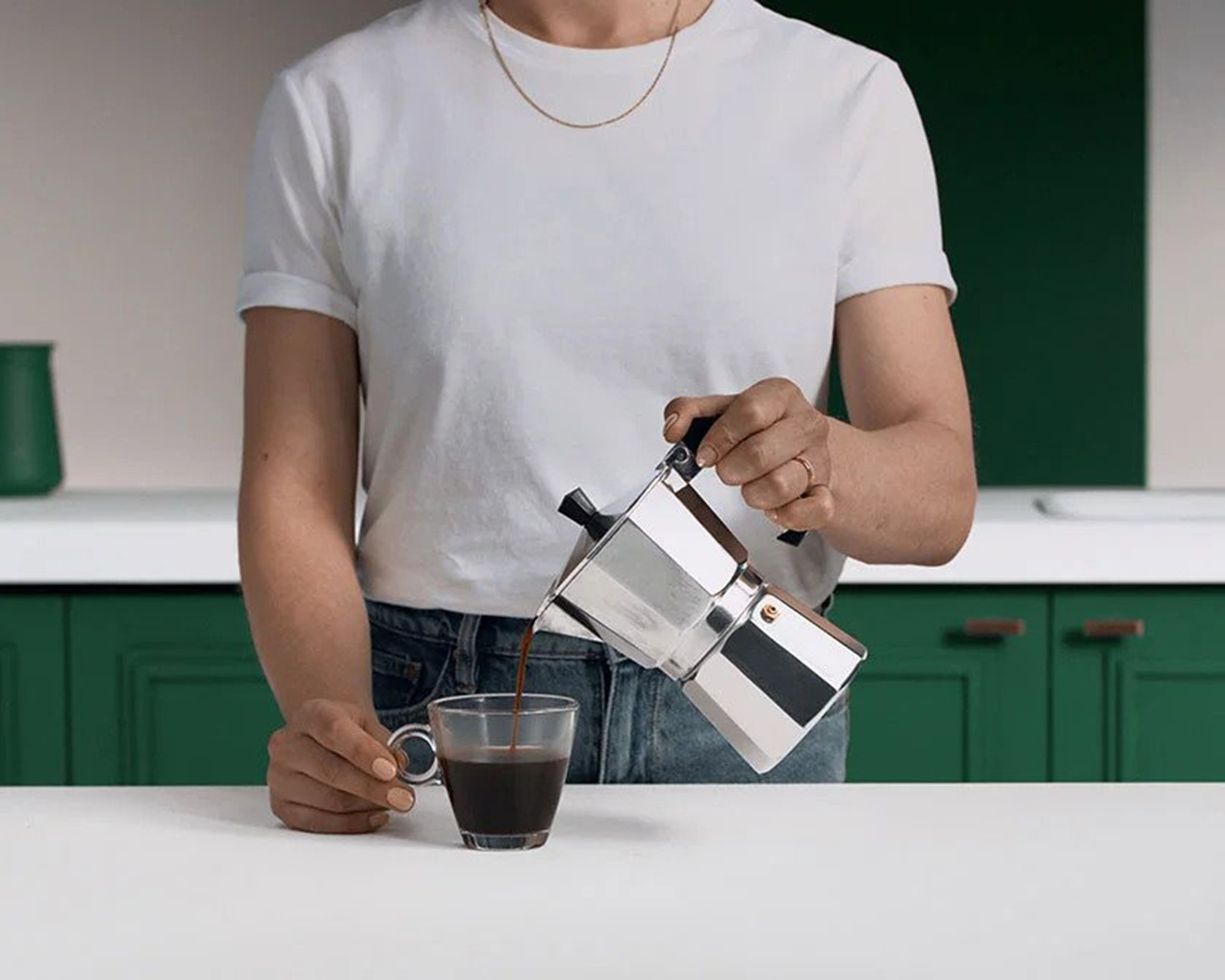
Using a Percolator (moka) coffee maker
'Small, two-chambered moka pots sit on many Italian stove tops, easy to use and producing a full-bodied coffee, rich in aroma. Many have an hourglass shape, but you can find moka pots in a variety of styles, all based on the same operating principle,' says Faina.
'Water is heated in a lower chamber. Vapor pressure approaching two atmospheres pushes the water up through ground coffee in a filter, which collects in the upper chamber as liquid coffee.'
'It’s really that simple, but it does take some practice, a careful eye and the right grind, never too fine. Use a low flame, and be sure not to overheat to coffee.'
How to prepare moka coffee
- Fill the base chamber with cold water up to the level of the valve. Insert the filter.
- Completely fill the filter with ground coffee, but don’t pack it down.
- Make sure the filter and rubber gasket are in place. Screw the two chambers tightly together.
- Place the moka pot on the stove. Warning: keep the heat low.
- Remove pot from heat just when coffee starts to gurgle, before it starts to rise and bubble. You’ll be sure to extract only the best parts of the coffee.
- Mix the coffee with a spoon before pouring into cups.
- Rinse the coffee maker with hot water and let dry thoroughly before screwing chambers back together.
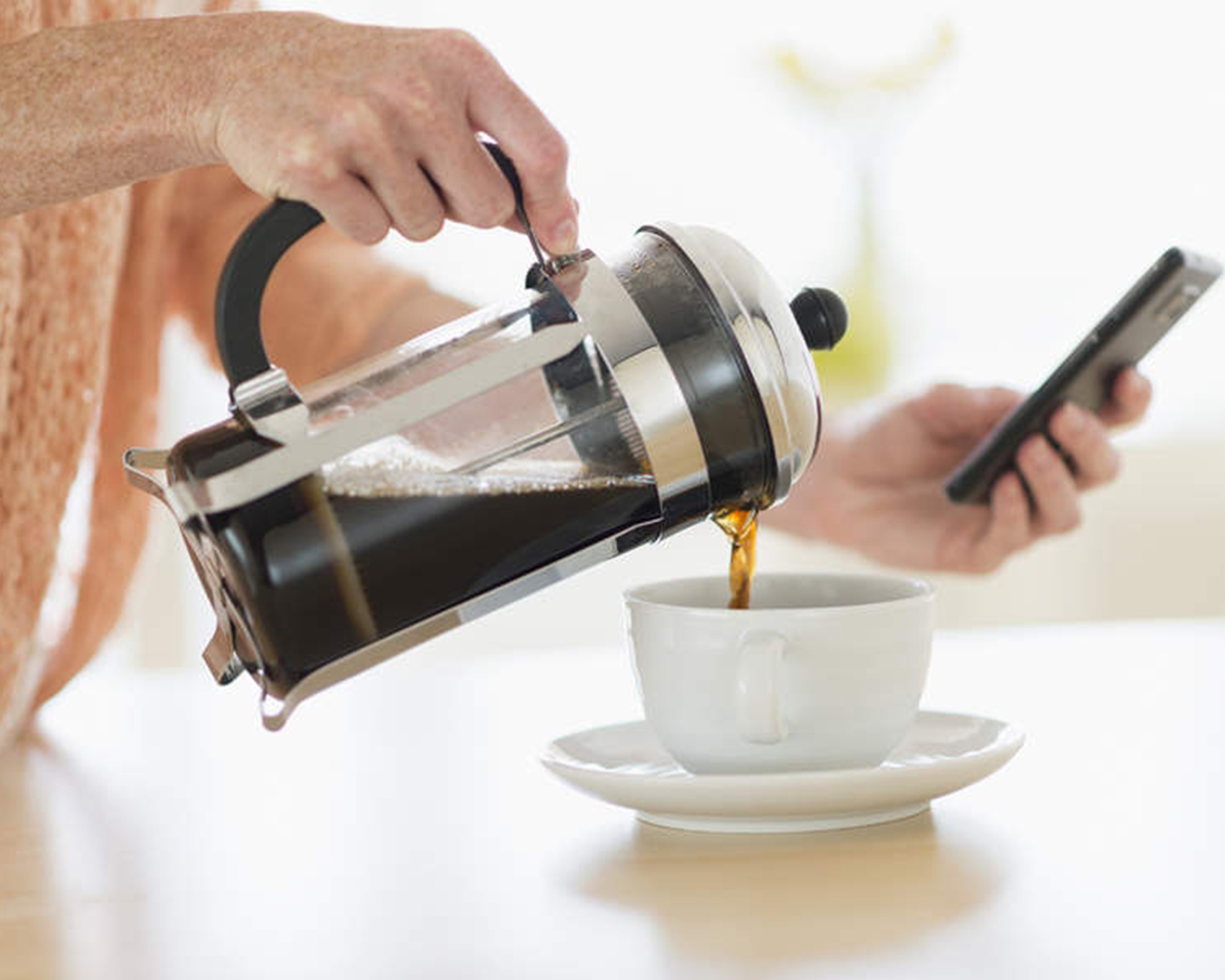
How to use a French press or cafetiere coffee maker
'A cylindrical pot with a plunger and built-in filter screen that presses hot water through ground coffee: that’s the simple beauty of the French press, method of choice for many all over the world, creating an earthy, rich taste in the cup.' says Faina
'The secret is all in the grind: choose medium, with uniformity and consistency throughout. Very coarse grinds may clog the filter, while very fine grinds will pass through the filter, muddying the results.'
Here's how to use a French press.
- Place the pot on a dry, flat surface. Hold the handle firmly, then pull out the plunger
- Add a heaping tablespoon (7-8 grams) of coffee to the pot per 200 ml (6.7 oz) of water
- Pour hot water – not quite boiling – into the pot, and gently stir
- Carefully reinsert the plunger into the pot, stopping just above the water and ground coffee (do not plunge yet), and let stand for 3-4 minutes
- Press the plunger down slowly, exerting steady pressure
- After each use, wash the pot with water and mild detergent, and dry thoroughly

Choosing a coffee maker
'The brilliant thing about coffee machines is that there is a machine for everyone based on their coffee preference.' says Claire Edwards, home economist, SMEG.
'If you love good filter coffee, the best and most affordable option on the market is a drip filter coffee machine. For those who prefer a traditional espresso or a machine with an option to froth milk, then an espresso machine is best suited.'
'If you are looking for a coffee machine that is easy and simple to use, an all-in-one machine such as a bean to cup model is beneficial. Perfect for pouring coffee from freshly ground beans at the touch of a button, this machine can create barista-style coffee with ease. Carrying out each step from grinding coffee beans to pouring a final coffee, this appliance completes each step usually performed in coffee shops with little input from the user.'
'This all-in-one coffee machine is space-saving (not requiring a separate coffee grinder, milk frother, and coffee machine taking up worktop space) and offers the ability to personalize your coffee. Whether you’re a fan of everything from espressos to Macchiatos, bean to cup machines allow you to personalize the strength of your coffee, how much milk you’d like and how frothy this is, and how well ground you’d like your coffee beans, at the touch of a button.'
What drinks can I make using a coffee maker?
'This is coffee machine dependent,' says Cutler-Colclough.
'If you have a pod coffee machine that includes a milk frother, then you can make all the coffee-related drinks on the traditional café menu. For example, Cappuccino, Latte and Flat White. If your pod coffee machine does not have a milk frother, you will be able to make an Americano and Espresso.'

Hi, I'm the former acting head ecommerce editor at Real Homes. Prior to working for the Future plc family, I've worked on a number of consumer events including the Ideal Home Show, Grand Designs Live, and Good Homes Magazine. With a first class degree from Keele University, and a plethora of experience in digital marketing, editorial, and social media, I have an eye for what should be in your shopping basket and have gone through the internal customer advisor accreditation process.